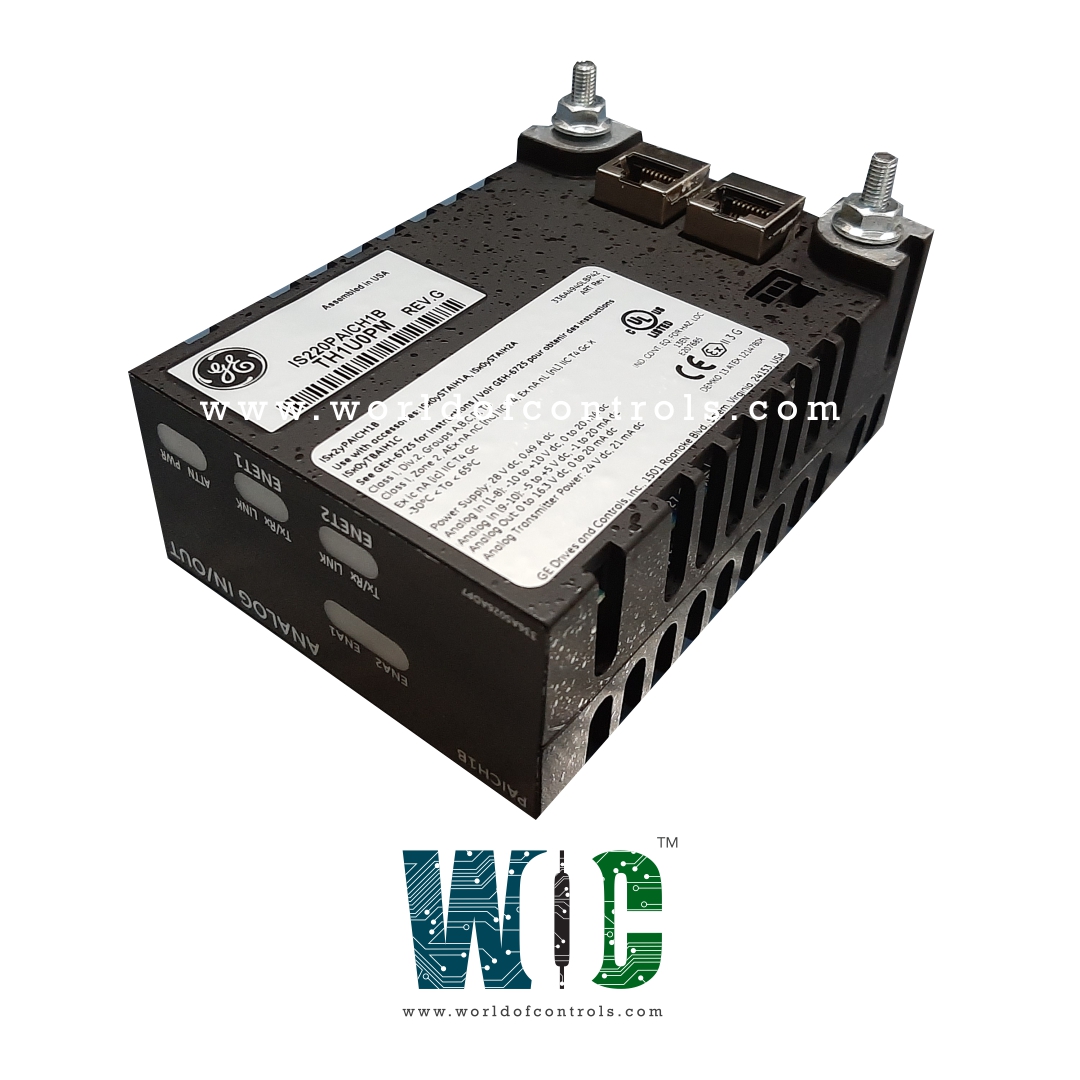
World Of Controls understands the criticality of your requirement and works towards reducing the lead time as much as possible.
IS220PAICH1B, REV G - Analog I/O Module is available in stock which ships the same day.
IS220PAICH1B, REV G - Analog I/O Module comes in UNUSED as well as REBUILT condition.
To avail our best deals for IS220PAICH1B, REV G - Analog I/O Module, contact us and we will get back to you within 24 hours.
SPECIFICATIONS:
Part No: IS220PAICH1B, REV G
Manufacturer: General Electric
Function: Power Supply Board
Series: Mark VIe
Operating temperature: 0 to 60 o C
Input voltage: 125 V
Total Output: 400 W
Total Output Power: 400 W
Output Voltages: +5, ±12, ±15, ±28 V DC
Operating Temperature: 0 to 60°C
Board Size: 6.25 x 4.25 inches
Availability: In Stock
Country of Origin: USA
Manual: GEH-6421l
FUNCTIONAL DESCRIPTION:
IS220PAICH1B, REV G is an Analog I/O Module manufactured and designed by General Electric as part of the Mark VIe Series used in GE distributed turbine control systems. The Analog I/O pack (PAIC) serves as the electrical interface between one or two Ethernet I/O networks and an analog input terminal board. It includes a BPPx processor board and a specialized acquisition board for analog input functions. This I/O pack can handle up to 10 analog inputs: the first eight are configurable for ±5 V or ±10 V, or 4-20 mA current loop inputs, while the remaining two can be set for ±1 mA or 4-20 mA current inputs.
Current loop input terminal resistors are located on the terminal board, with voltage measured across them by the PAIC. The PAICH1 model supports two 0-20 mA current loop outputs, while the PAICH2 model features additional hardware to support up to 0-200 mA on the first output. Input is received via dual RJ-45 Ethernet connectors and three-pin power input, while output is delivered through a DC-37 pin connector that links to the terminal board. Diagnostic indicators are available via LED lights.
INSTALLATION:
ANALOG INPUT HARDWARE:
Inputs 1-8 can be individually configured as ±5 V, ±10 V, or 4-20 mA scale signals, depending on the input configuration. Inputs 9-10 can only be configured for ±1 mA or 4-20 mA. The terminal board provides a 250 Ω burden resistor when configured for Furrent inputs yielding a 5 V signal at 20 mA. These analog input signals are first passed through a passive, low-pass filter network with a pole at 75.15 Hz. Voltage signal feedback from the analog output circuits and calibration voltages are also sensed by the PAIC analog input section.
ANALOG OUTPUT HARDWARE:
The PAIC includes two 0-20 mA analog outputs capable of 18 V compliance running simplex or TMR. A 14-bit DAC commands a current reference to the current regulator loop in the PAIC that senses current both in the PAIC pack and on the terminal board. In TMR mode, the three current regulators in each PAIC share the commanded current loads among themselves. Analog output status feedback for each output includes:
WOC has the largest stock of GE Distributed control system replacement parts. We can also repair your faulty boards and supply unused and rebuilt boards backed up with a warranty. Our team of experts is available round the clock to support your OEM needs. Our team of experts at WOC is happy to assist you with any of your automation requirements. For pricing and availability on any parts and repairs, kindly contact our team by phone or email.
What is the difference between Analog Input and Analog Output?
An Analog Input module converts continuous analog signals from sensors into digital data for processing, while an Analog Output module converts digital signals from controllers into continuous analog signals to control actuators.
How does an Analog I/O module work?
An Analog I/O module works by converting analog signals to digital using an ADC for inputs, and converting digital signals to analog using a DAC for outputs, enabling communication between sensors, controllers, and actuators.
What types of signals do Analog I/O modules handle?
Analog I/O modules typically handle voltage signals (e.g., 0-10V), current signals (e.g., 4-20mA), and resistance-based signals from sensors like RTDs or thermocouples, depending on the application.